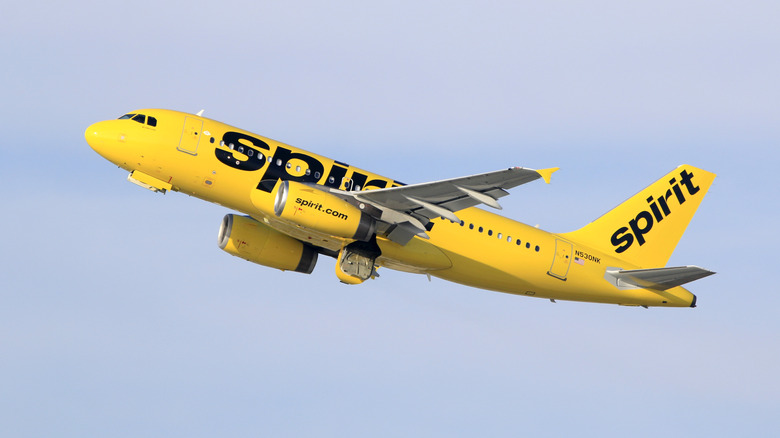New Spirit Airlines Itinerary Will Make Summer Travel A Lot Harder In 2025
Thinking of flying with Spirit Airlines this summer? You might need to adjust your travel plans. Fresh out of financial restructuring after filing for bankruptcy in November 2024, the budget airline has officially implemented significant changes for the upcoming season. Among the most noteworthy are a series of widespread route reductions, aircraft shortages, and airport eliminations that essentially reshapes their entire flight network.
As part of their restructured business model to help return to profitability, Spirit Airlines announced that they're planning to cut approximately 12,000 flights for May and June 2025 compared to the same period last year. A 24% reduction in the carrier's overall schedule, this drastic cut basically means that a whopping one in four flights has been completely removed from their summer itinerary — severely limiting options for travelers who rely on the airline to get where they want to go.
Once considered a popular option for budget-conscious travelers, these cuts continue to further Spirit's reputation for less-than-satisfactory passenger experience. The airline already ranks as one of the absolute worst for legroom among U.S. carriers. Beyond that, they offer no complimentary beverages or snacks in-flight, and charge you additional "junk fees" for pretty much everything — from adding a carry-on bag to your trip (starting from $35) to letting you choose your seat ($14 and up), and printing your boarding pass at an airport kiosk (a whole $2). Now, with these massive route reductions essentially limiting where customers can fly, it might be the final blow for travelers who previously tolerated these inconveniences for the sake of low fares.
Spirit Airlines is cutting roughly 12,000 flights this summer
Broadly speaking, Spirit Airlines' flight reductions will affect airports across the country to varying degrees. Some of the hardest-hit locations include Boston with a 44% reduction in flights, New York LaGuardia with 39% fewer services, and Los Angeles, where available flights have decreased by 37%. Other significantly affected airports include Myrtle Beach with a 34% cut, and Chicago O'Hare with 30% fewer Spirit flights.
Along with that, smaller markets are expected to suffer from even more dramatic impacts. Cties like Albuquerque, New Mexico and Boise, Idaho have lost around 84% of their scheduled Spirit flights, with available services dropping from 111 and 115 flights respectively to just 18 in each location. Meanwhile, Portland, Oregon has seen its Spirit flight options cut by more than half — decreasing from 357 to 124 flights.
Even Spirit's traditional strongholds in Florida haven't been spared: Fort Lauderdale and Orlando are losing more than 1,000 flights each, a reduction between 20.5% and 28%. Topping things off, the airline has also completely eliminated service to four destinations: Manchester, New Hampshire; Cap-Haïtien and Port-au-Prince in Haiti; and Guayaquil, Ecuador.
Budget airlines are facing industry-wide challenges
At the end of the day, Spirit's dramatic cuts reflect a much broader issue that's currently affecting the entire budget airline sector. While these carriers enjoyed substantial profits in the 2010s, their recovery since the pandemic has been challenging. From dealing with rising fuel costs to competing for scarce pilots amid industry-wide staffing shortages, the financial pressures have mounted.
To make matters even more difficult, several major carriers have actively introduced their own "basic economy" options that directly compete with budget airlines. This makes it easier for passengers to stick with established legacy brands that would typically charge premium prices, while still reaping the benefits of lower fares.
This has made it increasingly difficult for budget carriers to successfully maintain their position in the market or keep up with the bigger players. This is partly why so many industry experts now consider budget airlines like Spirit to be an endangered business model in today's landscape — shrinking and scaling back slowly until they disappear forever.


